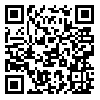Volume 3, Issue 1 (Winter-Spring 2020)
Mod Med Lab J 2020, 3(1): 30-34 |
Back to browse issues page
Download citation:
BibTeX | RIS | EndNote | Medlars | ProCite | Reference Manager | RefWorks
Send citation to:



BibTeX | RIS | EndNote | Medlars | ProCite | Reference Manager | RefWorks
Send citation to:
Jalili M. Prediction of Toxin-Antitoxin system (TA system) as a Novel Potent Target in Salmonella typhi Using Bioinformatics Analysis. Mod Med Lab J 2020; 3 (1) :30-34
URL: http://modernmedlab.com/article-1-61-en.html
URL: http://modernmedlab.com/article-1-61-en.html
Abstract: (5381 Views)
Background and Objective: Salmonella typhi is one of the major challenges for the human and animal health. Salmonella with high pathogenicity can be harmful factor for human health. The control of this pathogen is a big challenge as it can cause serious infectious diseases such as gastroenteritis, septicemia and typhoid fever. On the other side, there are many factors such as toxin-antitoxin (TA) system which may be a regulator for the virulence factors in bacteria. The TA system as a potent target for antimicrobial therapy is very important in this bacterium. Therefore, bioinformatics analyses are essential for identification of the potent TA loci. This system is potency for the antimicrobial therapy. In this study, we focused on the TA system as a regulon for the pathogenicity of Salmonella typhi.
Materials and methods: We analyzed the potent TA loci and assume the review of these potent TA loci can help us in the next experimental studies. We used RASTA (RASTA-Bacteria: a web-based tool for identifying toxin-antitoxin loci in prokaryotes) database and after that we analyzed TA system in all of the scores. Finally, all of the known and unknown TA loci were identified.
Results: By scrutiny different scores and excavate potent TA loci in Salmonella typhi, we were able to discover significant potent TA loci. We discovered several loci in scores 70-80%. In other hand, the potent TA loci were significant in scores 90-100%. A significant number of potent TA loci were discovered on this score. It is interesting that hth-xre exists in most scores and finally the highest number is compared to the other unknown potent TA loci in both strains of Salmonella typhi.
Conclusion: By studying all the scores in two different strains of Salmonella typhi including P_stx_12_uid87001 and Ty21a_uid201427, hth-xre was shown in both strains as an unknown TA system which can be a great help for bioinformatics and experimental studies. Finally; we identified the potent TA loci in different Salmonella typhi strains
Materials and methods: We analyzed the potent TA loci and assume the review of these potent TA loci can help us in the next experimental studies. We used RASTA (RASTA-Bacteria: a web-based tool for identifying toxin-antitoxin loci in prokaryotes) database and after that we analyzed TA system in all of the scores. Finally, all of the known and unknown TA loci were identified.
Results: By scrutiny different scores and excavate potent TA loci in Salmonella typhi, we were able to discover significant potent TA loci. We discovered several loci in scores 70-80%. In other hand, the potent TA loci were significant in scores 90-100%. A significant number of potent TA loci were discovered on this score. It is interesting that hth-xre exists in most scores and finally the highest number is compared to the other unknown potent TA loci in both strains of Salmonella typhi.
Conclusion: By studying all the scores in two different strains of Salmonella typhi including P_stx_12_uid87001 and Ty21a_uid201427, hth-xre was shown in both strains as an unknown TA system which can be a great help for bioinformatics and experimental studies. Finally; we identified the potent TA loci in different Salmonella typhi strains
Type of Study: Original Research Article |
Subject:
Clinical Microbiology
Send email to the article author
| Rights and permissions | |
 |
This work is licensed under a Creative Commons Attribution-NonCommercial 4.0 International License. |






